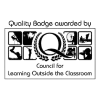


You can choose from a fully guided tour with Anglia Tours where your guide will support you with both your educational objectives and in navigating around the city each day. Or if you're very familiar with Berlin and have your own unique way of running your trip, WST can tailor make all the itinerary arrangements to suit you on a self-guided trip.
Inspire your students by getting in touch with our expert team to start crafting your next history trip.

View our range of Guided History trips to Berlin with Anglia Tours. Sort by study theme to find the perfect tour for your group.

Take a look at the range of visits and sample itineraries to inspire you for your next History trip to Berlin

If you're following Pearson Edexcel we have a number of itineraries that have been endorsed by the examination board
At Next Generation Travel, we arrange captivating educational school and tours to Berlin for a range of study themes:
A History trip to Berlin will cover a range of study topics from Weimar Germany through to the Fall of Communism. Visiting Berlin brings understanding and empathy to your students as they visit iconic locations and follow the key events of the 20th Century.
For those of you following the Pearson Edexcel exam board we offer a choice itineraries which have been endorsed to support your learning.












At NGT, we take school trips seriously. We are destination and subject experts with an award-winning service. You can count on us for the perfect balance of educational and personal development. We take great pride in ensuring our customers’ satisfaction by going above and beyond to meet their travel needs. But don’t just take out word for it…




